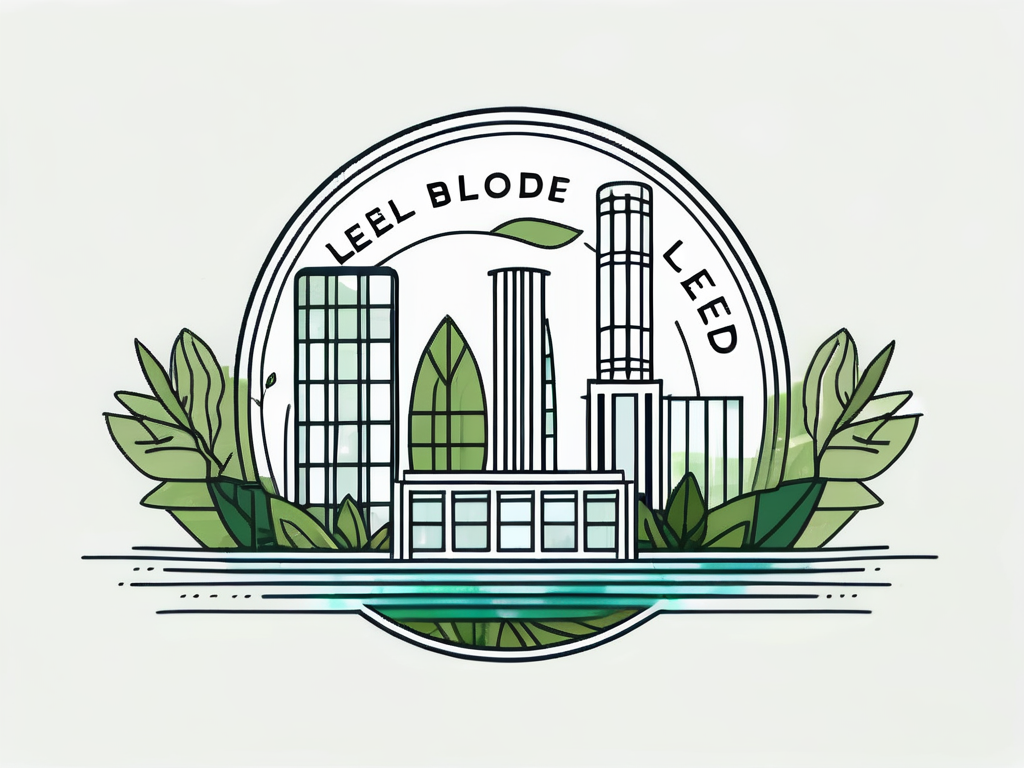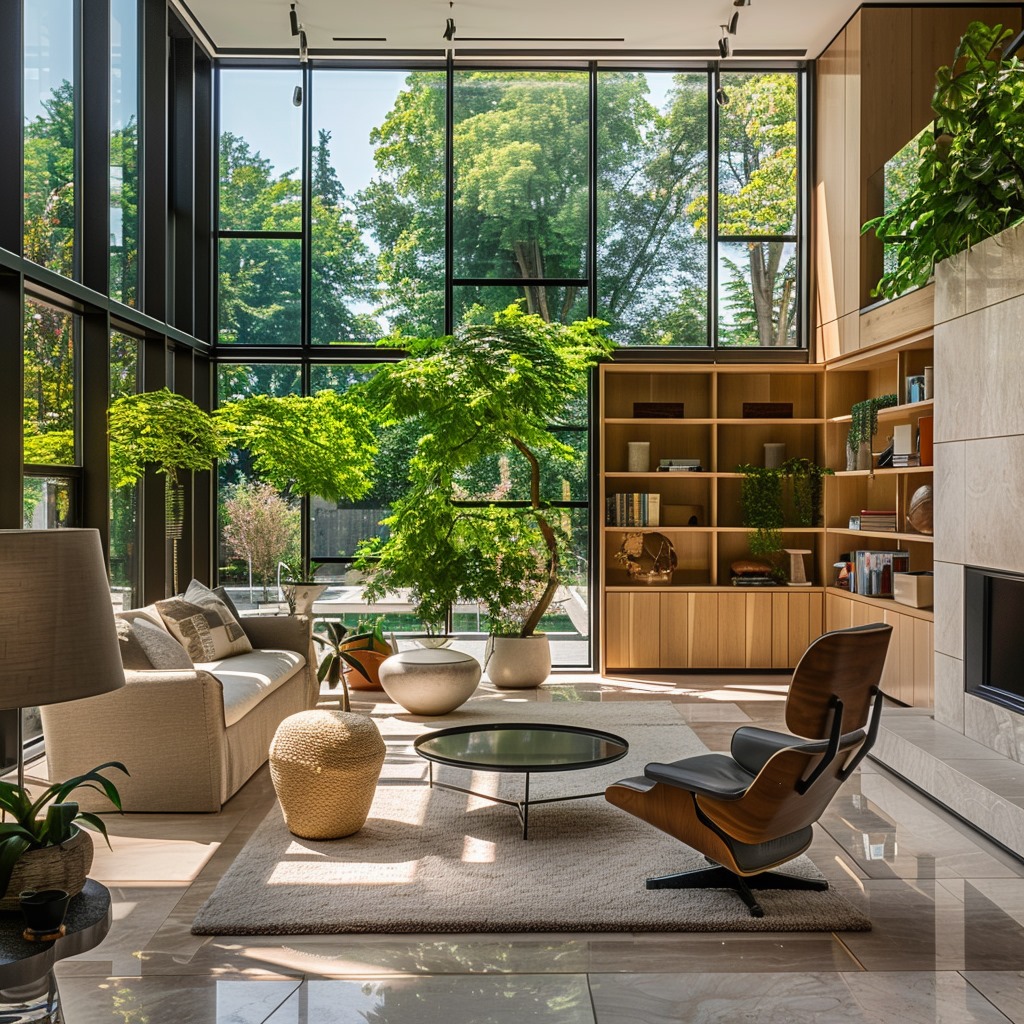In today’s world, the concept of sustainability is becoming increasingly significant. As the effects of climate change become more pronounced, individuals and organizations are searching for innovative ways to reduce their impact on the environment. One such solution gaining popularity is green building, a design and construction approach that aims to minimize the overall environmental impact of a building throughout its lifecycle. Central to this movement is the LEED certification system, which stands for Leadership in Energy and Environmental Design. This article will explore the concept of green building, explain the ins and outs of LEED certification, and analyze its significance in the grand scheme of sustainable construction.
Understanding the concept of green building
Green building encompasses various strategies and techniques that prioritise energy efficiency, water conservation, waste reduction, and the use of sustainable materials. At its core, it aims to create structures that have a minimal negative impact on the environment while providing a healthy and comfortable space for occupants. The principles of green building hinge on the idea of reducing energy consumption, employing renewable energy sources, optimising water usage, promoting healthier indoor air quality, and adopting environmentally friendly practices throughout the construction process.
The impact of green building on the environment is truly remarkable. Not only does it significantly reduce carbon emissions, but it also conserves natural resources such as water and promotes biodiversity. Sustainable building practices minimise overall waste generation and contribute to a cleaner and healthier planet for future generations.
One key aspect of green building is the incorporation of passive design strategies. These strategies utilise the natural elements of the site, such as sunlight, wind, and vegetation, to enhance the building’s energy efficiency and indoor comfort. For example, orienting a building to maximise natural light exposure can reduce the need for artificial lighting, thus lowering energy consumption. Similarly, incorporating natural ventilation systems can decrease the reliance on mechanical cooling systems, further reducing energy usage and operational costs.
Another important consideration in green building is the selection of sustainable materials. This involves using products that are responsibly sourced, have a low environmental impact, and are durable to ensure longevity. Materials such as reclaimed wood, recycled glass, and bamboo are popular choices in green construction due to their renewable nature and reduced carbon footprint. By prioritising sustainable materials, green buildings not only minimise their environmental impact during construction but also contribute to a healthier indoor environment for occupants.
The LEED certification explained
The US Green Building Council (USGBC) introduced the LEED certification system to provide a standardized framework for assessing a building’s environmental performance. LEED certification is globally recognized as a hallmark of sustainable design and construction excellence. It serves as a roadmap for developers, architects, and construction professionals who aim to create high-performance green buildings.

LEED, which stands for Leadership in Energy and Environmental Design, has become synonymous with environmentally conscious building practices. Buildings that achieve LEED certification are not only more energy-efficient but also have a reduced environmental impact, lower operating costs, and improved occupant health and well-being.
The origins of LEED certification
The development of LEED certification began in the early 1990s when the USGBC recognized the need for a comprehensive rating system that would guide and recognize sustainable building practices. With the involvement of experts from various fields, the system was refined over the years to ensure its relevance and effectiveness in promoting sustainable practices.
LEED certification has evolved to encompass different building types, including commercial buildings, residential homes, schools, healthcare facilities, and even entire neighbourhoods. This adaptability has contributed to its widespread adoption across the globe, with projects in over 165 countries and territories participating in the LEED rating system.
The process of obtaining a LEED certification
Earning a LEED certification involves a rigorous evaluation of a building’s sustainability performance. The process starts with project registration and the appointment of a LEED-accredited professional to oversee the certification process. The building is then evaluated across various categories, including energy efficiency, water efficiency, materials and resources, indoor environmental quality, and innovation. To achieve certification, a minimum number of points must be earned through compliance with specific criteria within each category.
LEED certification encourages a holistic approach to sustainable building design, where factors such as site selection, water management, sustainable materials, and indoor air quality are carefully considered and integrated into the project. This comprehensive evaluation ensures that LEED-certified buildings not only benefit the environment but also provide healthier and more productive spaces for occupants.
The significance of LEED certification in green building
The benefits of LEED certification for builders
For builders, obtaining a LEED certification provides numerous advantages. Firstly, it enhances their reputation as responsible and environmentally conscious professionals, attracting clients who value sustainable practices. LEED-certified buildings also tend to have lower operating costs due to increased energy and water efficiency, leading to long-term savings. Additionally, contractors can access a wealth of knowledge and resources through the USGBC community, enabling continuous learning and improvement in sustainable building practices.
Moreover, achieving LEED certification demonstrates a commitment to innovation and leadership in the construction industry. It showcases a builder’s ability to meet stringent environmental standards and adapt to evolving sustainability trends. By incorporating green building principles into their projects, builders can stay ahead of the curve and position themselves as industry pioneers, setting a benchmark for others to follow.
The advantages of LEED-certified buildings for occupants
LEED-certified buildings offer numerous benefits to their occupants. The emphasis on indoor air quality ensures healthier and more productive environments. The proper use of natural light and access to views contribute to increased occupant satisfaction and well-being. Furthermore, LEED-certified buildings promote sustainable transportation practices, accessibility, and thermal comfort, resulting in spaces that prioritize occupant comfort and satisfaction.
Additionally, occupants of LEED-certified buildings often experience improved mental well-being and reduced stress levels. The incorporation of biophilic design elements, such as green walls and natural materials, creates a connection to nature within the built environment. This biophilic approach has been shown to enhance cognitive function, creativity, and overall mood, providing occupants with a more holistic and fulfilling experience within the space.
The global influence of LEED certification
The role of LEED certification in promoting sustainable construction
The introduction of LEED certification has sparked a global revolution in sustainable construction practices. As awareness of the importance of environmental stewardship grows, more regions around the world are adopting the LEED system to guide their building projects. This widespread adoption has seen the proliferation of green buildings that prioritize energy efficiency, water conservation, and overall sustainability.
The future of LEED certification and green building
The future of LEED certification and green building is promising. As technology advances, so too does the potential for innovative sustainable design and construction practices. The LEED system will continue to evolve and adapt to account for emerging trends and challenges. Additionally, governments and organizations worldwide are increasingly recognizing the role of green building in achieving sustainability goals and reducing their carbon footprint, leading to greater demand for LEED-certified professionals and buildings.
In recent years, the impact of LEED certification has extended beyond the construction industry. The principles and practices promoted by LEED have influenced other sectors, such as urban planning and infrastructure development. Cities around the world are now incorporating LEED guidelines into their urban development plans, aiming to create sustainable and livable environments for their residents. From green roofs and rainwater harvesting systems to bike lanes and pedestrian-friendly spaces, LEED-inspired urban planning is transforming cities into more environmentally conscious and people-centric places.
Moreover, the influence of LEED certification has not been limited to developed countries. Developing nations are also recognizing the value of sustainable construction and are actively embracing the LEED system. By doing so, they are not only addressing environmental concerns but also reaping economic benefits. LEED-certified buildings attract investors, businesses, and tourists, boosting local economies and creating job opportunities. These countries are leveraging sustainable construction as a catalyst for economic growth and social development.
In conclusion, green building and LEED certification go hand in hand. By understanding the principles and benefits of green building and grasping the importance of LEED certification, individuals and organizations can actively contribute to creating a more sustainable future. Through their environmental, economic, and social advantages, LEED-certified buildings play a crucial role in reducing our impact on the environment and promoting a healthier and more sustainable planet for generations to come.
Inquiries?
Al seleccionar la bandera, este sitio web está disponible en español, euskera (vasco), catalán y otros idiomas europeos.

